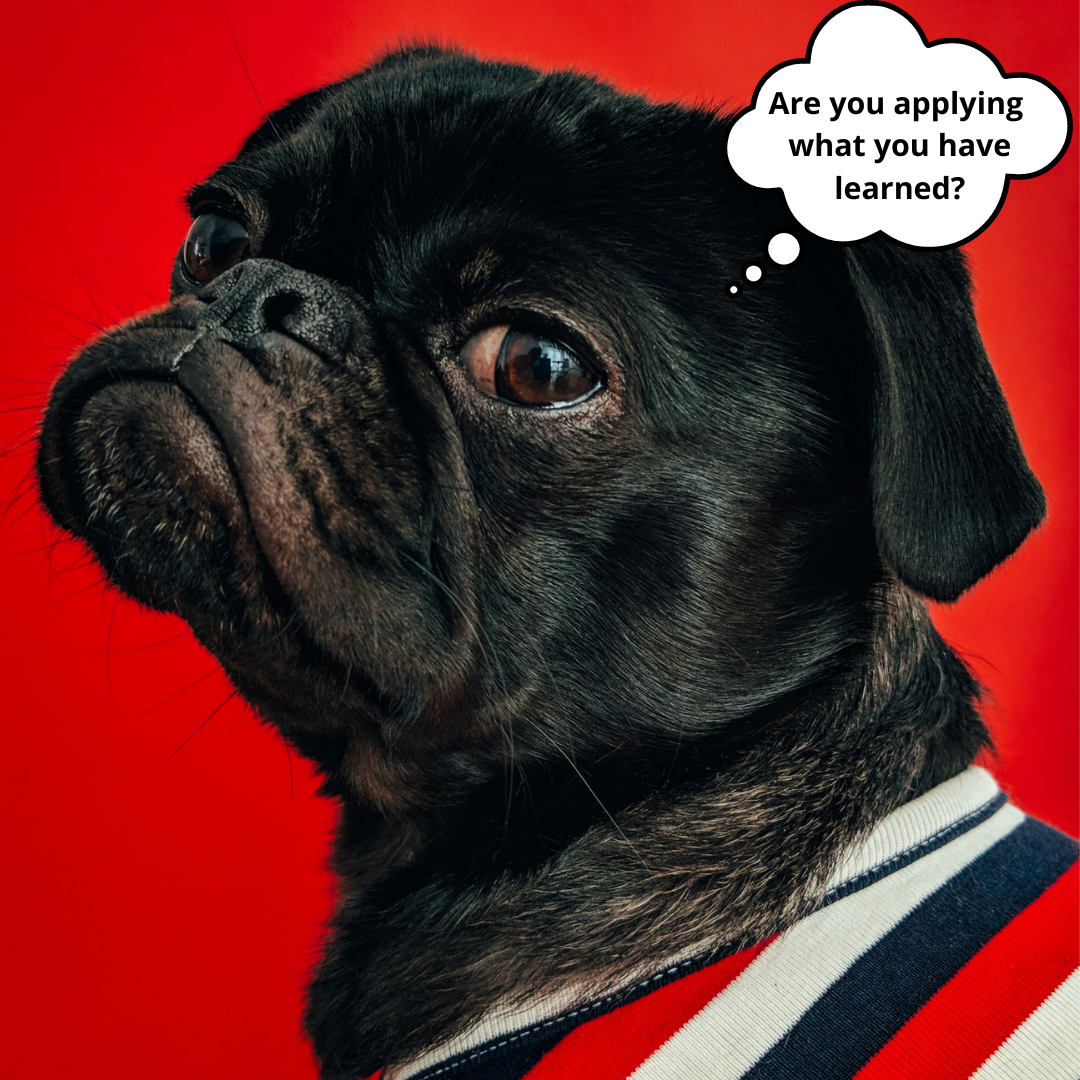Impulse control vs. trial and success learning
Photo by McDobbie Hu on Unsplash
When I first started dog training, I've been told that we should all teach impulse control exercises to our dogs. The idea behind them was the dog to be a good companion needs to have the ability to control his impulses. The example was "leave it" exercise. You toss the treat on the floor, tell your dog "leave it" and wait for him to disengage from wanting to take it and then reinforce looking back at you. If you toss it too close, you will have a very hard time and a long wait until he disengages. You normally don't start with the treat tossed right in front of the dog and you keep a distance that you then work gradually to decrease. Eventually, you also add moving around the treat or even towards it. What could be wrong in that picture?
Imagine wanting a slice of a pizza. Someone orders it, brings it in, you get excited about eating it, he puts it in front of you and then tells you to leave it. How would that make you feel?
Photo by Chewy on Unsplash
In the form of "leave it" exercise explained above, that's what we are doing to our dogs. They can learn to come to you for a different treat and for some it will be easier than for others. However, are we really teaching the dog to develop impulse control or are we sending a mixed message that sometimes when I toss the treat, we are playing and sometimes I will prevent you from it and play a different game?
What could be an alternative to teach "leave it" cue? Ask yourself, what is it that you want your dog to do? You want your dog to turn around and take the treat from your hand. What if we can teach that before we even put the treat or anything else on the floor? I want to give him behaviours and not take away normal, usually practised before behaviours. I don't have a problem with my dog running after a treat that I tossed, I use it as a fun game to play. The dog comes to me and I toss the treat so he has to run after it, then he comes again and I toss it in a different direction again. It's a fun game and by playing it we also teach coming back to us. I don't want to take this behaviour away but I can teach a different cue that means "I have something good for you".
Photo by Tamara Bellis on Unsplash
How would I go about it? I would say "leave it" and give the dog treats. I would practice turning around towards me, paying attention to me and teach that when I say "leave it" good things happen. When it's going nicely I would start to add complexity. I wouldn't start from food on the floor but some boring object that dog might want to investigate but is not really bothered by it. Just like in the first picture, you decrease distance gradually and add movement around the treat later, here we work gradually too but we make sure that the dog is always successful. That's the difference between those two approaches. It's not trial and error learning, it's trial and success learning (as Dr. Goldiamond, founder of constructional approach in human learning calls it*). We use what the dog can offer and we build from there. We don't have to label him "he doesn't have impulse control". It's not something inside of him that is making him behave, he simply lacks the skills that we can provide him with. I teach him skills that he can use later in a more complex environment. I empower him rather than take otherwise good behaviours away.
Photo by Charles Deluvio on Unsplash
When a dog is doing something I don't want him to do, I ask myself what are the skills that he is missing? What can I change in the environment to make it less likely for him to do it again? By leaving your lunch in his reach without ever teaching him what to do in this situation, you are waiting for a disaster to happen. Is it really his fault that he took the food that was out there or is it that he didn't have the skill? Instead of blaming him for being a bad dog, you can either give him the skills or you can learn to hide your lunch in a place that he cannot reach. "But I keep forgetting to do that!" one might say. Well, and your dog doesn't have the skill to leave it when it's out there. I don't blame you for forgetting as much as I wouldn't blame your dog for lacking the skills yet.
I believe we can teach our dogs the skills that will be helpful in our day to day lives. I don't like to leave it to chance though and I much prefer to think in terms of adding new behaviours rather than eliminating some. In the end, both of the approaches can teach and both of the approaches add complexity later. It's up to you what would you rather focus on. When I have a choice between two techniques, I would much rather empower my learner and give him a benefit of a doubt. To me, it's not about him not having this mysterious "impulse control" that I need to give him to make him into a good companion. In my opinion, he simply hasn't been taught the essential skills yet. And putting him in a place where he naturally wants to run after a treat, is like taking you to an obstacle run and tell you "go!", without teaching you how to jump through the obstacles first. I prefer to teach the essentials first instead of simply expecting my learner to know the essentials already, how about you?
Be a superhero for your dog, he will love you for it!
Photo by Kabo on Unsplash
*Here is the video where Dr. Goldiamond gives an example of “trial and success” learning https://www.youtube.com/watch?v=sbE_kCTVB2Y&ab_channel=Psic.Rodriguez















I'm feeling great and I prioritise health. I don't feel better than anyone else! I can enjoy feeling good about myself and hope for everyone else to enjoy themselves too. I believe that happiness is not something you achieve, it's something you DO. I'm choosing habits for happiness and I do them every day. I hope you can join me and start to seek happiness every day.